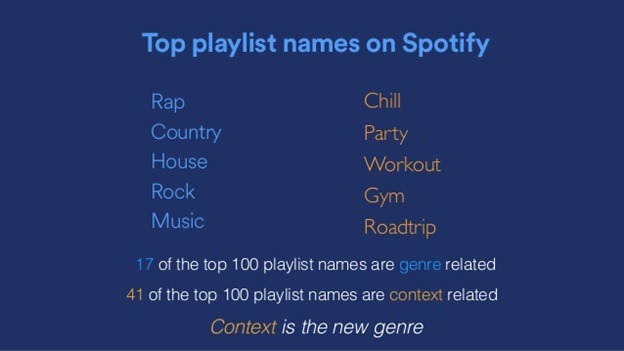Back in the early ‘80s when I was programming WRIF in Detroit, there were no computer scheduling systems. There were no computers! That meant that the songs I okayed for air were typed on 5×7 cards, colorized by category, placed in a box with dividers, and played according to a music sequence that I devised.
While the jocks weren’t choosing the actual songs on the station’s playlist, they had considerable control over the songs they played on their shows, able to dig into the card box to find the upcoming song that would sound good next to the last one they played. As a programmer monitoring your station, it was always a bit of an adventure. You knew what was coming next category-wise. But you didn’t know precisely which song was going to be played. This made for some fun, exciting, and anguishing moments as a PD.
So one summer day, WRIF is playing another radio station in a softball game, our van with the big speakers is on hand, and the station is blaring throughout the stands as the players are warming up. And I’m listening to my afternoon guy, Arthur Penhallow, play a Billy Joel ballad into an AC/DC rocker.
And I audibly groan, and a woman in the stands asks me what’s wrong. And being the wear-my-emotions-on-my-sleeve programmer that I was, I explain that what she just heard was a case of really bad sequencing – a “train wreck,” in programming parlance.
And she says to me, “But I love both songs. What’s wrong with that?”
As radio programmers, the truths we first learned about audience desires and basic “Programming 101” guidelines were much like folklore – passed down generation by generation, from radio luminaries to fledgling PDs. Bill Drake, Lee Abrams, Rick Sklar and others wrote “the rules” from experience and by carefully studying Arbitron ratings that are now like ancient history books.
Much of their dogma about music programming continues to live on, despite the fact most of it was designed by PDs from the ‘60s and ‘70s to best attract listeners from that era, all of whom were watching three TV networks, punching from one local station to another, and recording party tapes on audio cassettes.
And those rules about dayparting, artist separation, category sequencing, and listening patterns have essentially have remained the same for decades – even though consumers and the music they enjoy have undergone revolutionary changes, starting with the onset of streaming and the invention of the iPod.
Yet, radio’s mindset has been largely unchanged. We even test our music using the same basic methodologies we were using back in 1978.
And that’s why new information and data that point to what consumers are actually doing to create an optimal music experience is not only worthy of our attention, but it should be impacting our strategic thought process.
Earlier this year, I wrote about “The Skiposphere,” a post inspired by an article by Paul Lamere of Echo Nest who writes a great blog about music and how we consume it – “Music Machinery.” Paul recently spoke at SXSW and one of his key topic areas involved the notion that when you study Spotify consumption, many people aren’t listening to music playlists in the same way most of us make assumptions about how we program music stations. His study points to mood over genre. Many people are going for a feeling, a situational soundtrack, a set of music that matches their mood at the moment or an emotion they’d like to feel at that moment in time.
This spotlight on context flies in the face of the way that broadcast radio has been traditionally programmed. And while FM radio has more moving parts than Spotify – local roots, personality, promotions, contests – the notion that music is being consumed to fulfill different needs, situations, and moods is an important one. And it rarely, if ever, enters the strategic radio programming conversation.
This idea goes right to the heart of a post earlier this week about the jobs that consumers are hiring radio to do in 2015. And Lamere’s Spotify data suggest that mood-matching is an important but neglected variable in station programming – and research. That’s because we continue to study cume and quarter-hour listening. We continue to think “occasions” and not meter counts. We continue to do “format finders” and test libraries of songs.
But we fail to test – much less study – that context that Lamere refers to in his presentation.
This probably isn’t the first time you’ve encountered this idea of mood-driven radio. Horizon Media, in partnership with iHeartMedia announced a new approach to media buying and planning back in February. We blogged about their guiding research study by Sparkler suggesting the ability to match up advertising messaging with consumer moods.
Dr. Radha Subramanyam, iHeartMedia’s President of Insights, commented at the time that “Consumers continue to seek out content on the radio with which they have a personal connection and that is suited to their changing moods and needs throughout the day.”
That’s more fodder that suggests that radio programming can be enhanced and improved by rethinking the givens, questioning the folklore, and putting aside those traditional format clocks and the rules that go with them.
While it may differ by generation and other factors, the mood may, in fact, be the thing.
- Why “Dance With Those Who Brung You” Should Be Radio’s Operating Philosophy In 2025 - April 29, 2025
- The Exponential Value of Nurturing Radio Superfans - April 28, 2025
- What To Do If Your Radio Station Goes Through A Midlife Crisis - April 25, 2025






Playing music for the kind of mood you get ah huh kvil…1976 Worked then should work today if programmers really knew what their music schedulers could do.
Sometimes handpicking the music because it’s a rainy day or it’s a local celebration or your team just made the playoffs could make stations sound more personal and yes, real-time. Nothing against music scheduling systems because this is PD thing. As the software people will tell you, GIGO. Thanks, Lou.
When I programmed WRIF…
Penhallow always followed the format.
He just sounded like he didn’t.
That’s why we ended up winning.
Good point. He followed the format but I didn’t always love his choices. 🙂 Maybe you had a better rapport with him!
Sometimes it’s as simple as the morning where snow came out of nowhere and we played “Let it Snow” by Dean Martin. I imagined in my mind all of us sharing this moment as a community, tied together by this on the silly, very on the nose musical choice. Facebook and phone calls and a sarcastic remark from the p.d. were the icing on a the cake.
Dave, you hit on a great point. Many stations are live, but they’re not in-the-moment. When the music is scheduled the day before (or in some cases, even more in advance), it becomes challenging to match your audience’s mood swings when something happens in the weather, in sports, in the market, or in the world. Thanks for the comment.
Interesting points, I’ve always believed the best radio programming is that which is unpredictable, hit the audience with the unexpected,… It’s what I’ve based a career on.
Surprise is a key to winning – period. Thanks for the comment, Jerry.
If people didn’t care about mood listening(good flow)we might as well just all do the “Dave” format…great cume:) I have always preached TSL! Back in the early days Fred (when it was a card system)I could listen to the jocks I learned from (Penhallow, Savelly, Sotet, Santoni) for hours when they would put themes and moods together. I tried my best to emulate them as a jock and a Programmer. Programmers these days with the tools available should be killing but I’m not sure there are too many around with the creativity and passion to do it on a daily basis…I for one would love the opportunity to prove it can be done and maybe just maybe we all could get excited about local radio again! They come for the music first!
There’s no question, Todd, that the organizational value of scheduling software has been overtaken by the easy in which it takes to schedule a balanced, mathematically sound log. There’s always been a lot more to do it than that, as you point out. I think an additional benefit of the old school system was that the jocks were more engaged, less bored, and more focused on entertaining – not just when the few times an hour they cracked the mic. Thanks for the comment and for making a strong point.
Appreciate the comment, Dave. And I wish more PBP guys used Red’s trick. I’m excited for Opening Day.
I completely agree. Music’s gift is it evokes an emotional response. The best music programmers lead listeners down a path of moods or a range of moods balanced with the subliminal element of surprise, delight and suspense in “what’s coming up next?” It’s possible, even with a finite number of songs, to manipulate the collective mood of the listeners in a way excites and fulfills the expectation of “predictable unpredictability” for hours on end. In my opinion the key is to provide just enough variance in music mood qualities to keep them on edge song to song to where they never know what emotion is going Io be piqued, except they know they’re probably going to like it. Justin Verlander does the same by mixing up locations and speeds with just three or four pitches over 27 outs in s nine-inning game. A limited rotation of records shouldn’t hinder the range of emotions and moods a programmer can access in his/her listeners. Good topic! Keep us thinking, Fred!
Appreciate it, Paul. And let’s hope that Verlander’s in a good mood this season!